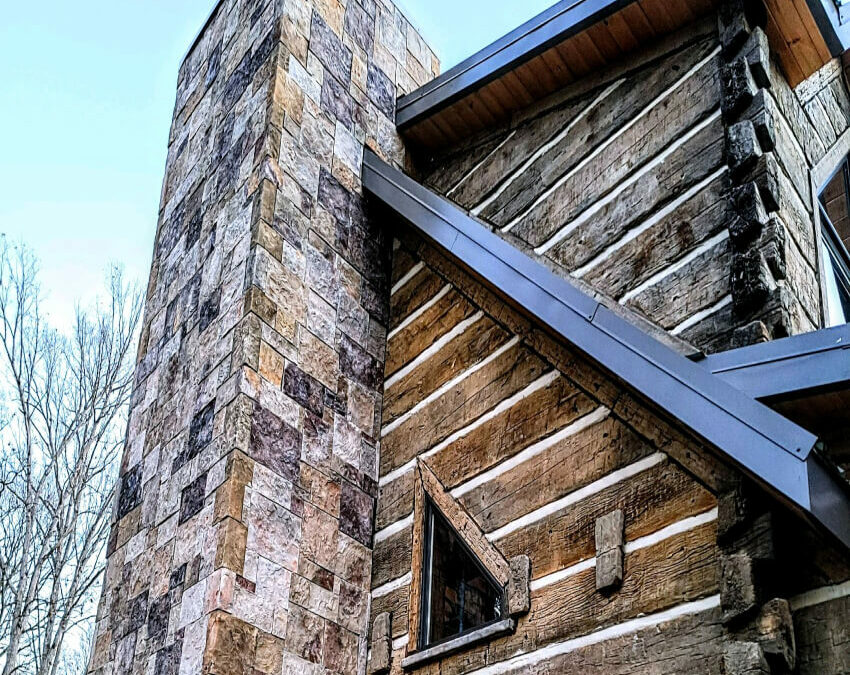Log cabins have a timeless appeal and are often associated with a sense of tranquility and connection to nature. Constructing a log cabin requires careful consideration of the materials used, as they play a crucial role in the overall durability and aesthetic appeal of the structure. In West Jefferson, a picturesque town known for its natural beauty, choosing the best log cabin building materials is essential for a successful project. This article will explore various aspects of log cabin construction materials, including understanding the basics, types of wood, non-wood options, insulation materials, and interior finishing options.
Understanding Log Cabin Construction
Before delving into the world of log cabin building materials, it’s important to have a basic understanding of the construction process. Log cabins are built by stacking horizontally-laid logs, typically interlocking at the corners. This traditional construction method creates a sturdy and visually appealing structure that harmonizes with the surrounding environment.
The Basics of Log Cabin Building
The foundation of a log cabin is an integral component, providing stability and preventing moisture ingress. Concrete slab foundations or pier-and-beam foundations are commonly used. It’s vital to ensure a solid and level foundation to support the weight of the logs and the cabin itself.
Once the foundation is in place, the logs are carefully selected and prepared. The most common types of logs used include pine, cedar, and spruce. These logs provide excellent structural integrity and are readily available in West Jefferson.
Importance of Quality Materials in Construction
Using high-quality materials is vital for achieving a durable and long-lasting log cabin. Quality logs minimize the risk of rot and damage caused by moisture. Additionally, well-prepared logs ensure better insulation, helping to maintain a comfortable indoor temperature year-round.
Investing in high-quality materials not only enhances the lifespan of the cabin but also reduces maintenance costs in the long run. West Jefferson residents value the beauty and longevity of their log cabins, making it crucial to select the best materials available.
Types of Wood for Log Cabins
Wood is the primary material used in log cabin construction, contributing to both the structural stability and aesthetic appeal of the cabin. Understanding the characteristics of different wood types is essential for choosing the most suitable option for your log cabin.
Characteristics of Popular Wood Types
Pine, known for its affordability and availability, is a popular choice for log cabin construction. Its light color and prominent grain patterns add a rustic charm to the cabin. However, pine may require regular maintenance to prevent insect infestations and wood decay.
Cedar, on the other hand, is naturally resistant to rot, insects, and decay. Its reddish-brown hue and pleasant aroma make it a sought-after option for log cabins. While cedar may be slightly more expensive than pine, its durability and resistance to weathering are worth considering.
Spruce, known for its strength and straight grain, is another suitable wood type for log cabins. Its light color allows for various finishing options, while its structural properties ensure long-term stability.
Choosing the Right Wood for Your Cabin
When selecting the wood for your log cabin, it’s crucial to consider various factors such as budget, desired aesthetics, and local availability. While each wood type has its own advantages, it’s recommended to consult with local builders and suppliers in West Jefferson to ensure the best choice for your specific needs.
Non-Wood Materials in Log Cabin Building
While wood is the primary material for log cabins, non-wood materials also play a significant role in the construction process. Stone and metal elements provide additional structural support and enhance the cabin’s appearance.
Role of Stone and Metal in Log Cabin Construction
Stone can be used for various purposes in log cabin construction, such as creating a sturdy foundation or accentuating the exterior design. Using natural stones found in the West Jefferson area can give the cabin a unique and authentic look.
Metal components, such as fasteners and connectors, ensure the overall stability and integrity of the log cabin. Stainless steel or galvanized metal is commonly used to prevent corrosion and increase longevity.
Selecting Durable Non-Wood Materials
When incorporating non-wood materials into your log cabin, it’s essential to choose durable options that can withstand the elements. Consult with local contractors or suppliers in West Jefferson to ensure the use of high-quality stone and metal materials that complement the natural beauty of the log cabin.
Log Cabin Insulation Materials
Insulation is a critical aspect of log cabin construction, as it helps maintain a comfortable indoor environment by regulating temperature and reducing energy consumption. Effective insulation materials ensure the cabin remains cozy during winter and cool during summer.
Importance of Proper Insulation
Proper insulation prevents heat transfer, eliminating drafts and cold spots within the cabin. It also helps reduce energy costs, making the log cabin environmentally friendly and economically efficient.
In regions like West Jefferson, where temperatures can fluctuate throughout the year, investing in quality insulation materials is essential to ensure the cabin remains comfortable regardless of the weather conditions.
Best Insulation Options for Log Cabins
There are various insulation options available for log cabins, including fiberglass, cellulose, and spray foam insulation. Fiberglass insulation, consisting of fine glass fibers, is a popular choice due to its affordability and ease of installation.
Cellulose insulation, made from recycled paper products, is environmentally friendly and provides excellent thermal performance. It is also resistant to mold and pests, adding to its appeal.
Spray foam insulation, though more expensive, offers superior thermal insulation properties and can effectively seal air leaks. Its versatility allows it to conform to any space, ensuring a tight and efficient insulation barrier.
Interior Finishing Materials for Log Cabins
Once the structural elements and insulation are in place, attention can turn to the interior finishes of the log cabin. Choosing the right materials for the interior not only enhances the cabin’s aesthetics but also contributes to the overall comfort and durability.
Aesthetic Considerations for Interior Finishes
Wood is often a popular choice for log cabin interiors, as it complements the natural ambiance of the space. Hardwood flooring, combined with exposed log walls, creates a warm and inviting atmosphere. Light-colored wood finishes can make smaller cabins feel more spacious, while darker woods provide a cozy and traditional feel.
For the ceiling, tongue-and-groove paneling adds a touch of elegance and provides a seamless look. Consider using reclaimed or locally sourced wood to add character and a sense of authenticity to your log cabin interior.
Practical Considerations for Interior Finishes
While aesthetics are important, practical considerations must also be taken into account when choosing interior finishing materials. In high-traffic areas like kitchens and bathrooms, durable and waterproof materials such as ceramic tiles or stone countertops are recommended.
Additionally, consider using low-VOC (Volatile Organic Compounds) paints and finishes to promote a healthy indoor environment. These eco-friendly options minimize the release of harmful chemicals into the air, ensuring the well-being of the cabin’s occupants.
In conclusion, selecting the best log cabin building materials is vital for a successful project in West Jefferson. Understanding the basics of log cabin construction, exploring different wood types, considering non-wood materials, choosing effective insulation options, and carefully selecting interior finishing materials are all important steps in creating a durable, beautiful, and comfortable log cabin. By investing in high-quality materials and seeking guidance from local experts, residents of West Jefferson can enjoy their log cabins for generations to come.
Experience the Smart Logs Difference
Ready to build a log cabin that embodies both tradition and innovation? Smart Logs of the Carolinas offers concrete log solutions that capture the essence of natural wood while providing unparalleled durability and energy efficiency. Our logs are designed for both new constructions and existing structures, ensuring that your West Jefferson cabin is not only cost-effective but also environmentally friendly and low maintenance. Embrace the charm of a log cabin without the concerns of warping, settling, or rot. For a home that’s as smart as it is beautiful, Contact Us today and take the first step towards your dream log cabin with Smart Logs of the Carolinas.

